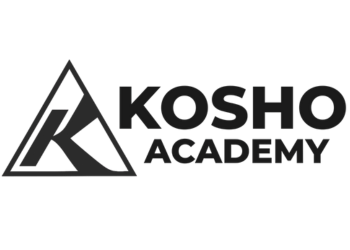
Evolution: Shoden-Chuden-Okuden
Feb 15, 2020by Jeff Driscoll, Kyoshi
The terms Shoden, Chuden, and Okuden are frequently used to describe the beginner, intermediate, and advanced levels of a martial arts system. They are frequently looked upon as merely the basic, intermediate, and advanced techniques, which comprise most martial systems; but the meaning of these three terms can also be interpreted as part of a developmental process that a practitioner will go through when studying the martial arts.
Most traditional martial arts systems were intended to be comprised of a physical side and a spiritual/philosophical counter part. Through time however, some successors of traditional art forms have allowed the spiritual/philosophical to fade, due to feeling that it has lack of importance, or that they may never have truly understood it to begin with. Many modern forms of martial arts today focus solely of the combative aspects, totally ignoring the philosophies which are meant to enhance the practitioner as a person, as well as a martial artist.
The spiritual/philosophical and historical aspects provide balance to the system so that it can instill, cultivate, and enhance the practitioner who studies it. When we speak of creating balance in a practitioner, we first think of creating good, strong, balanced basic fundamental techniques. In this process, the physical training allows an instructor to build a stronger, more fluid and coordinated individual. The student starts to become faster and more agile in everything they do. As the student evolves on the physical plane, so must the instructor use the philosophical aspects of the art to enhance an individual from the inside, building internal qualities that will make them a better part of society. Martial arts should be used to build someone from both the internal and the external sides to the goal. We must always remember that what lies inside us, will manifest in our outside world.
The teacher and the student should understand that the two are intrinsically connected. If the practitioner allows, the physical and philosophical training aspects of the martial way that the art teaches will have a way of permeating the individual’s perception of things. This goes hand in hand with lessons that the teacher puts forth in his/her presentation of the art. These teachings should not be solely focused on the physical techniques of the art, but also include philosophical and historical information that helps a practitioner evolve as an individual. The art of Kosho Ryu looks at the concept of Shoden, Chuden, and Okuden as levels of personal development, as well as technical growth. These terms can also be compared to the concept of Shu, Ha, and Ri, which specifically deal with the development of the student and his/her relationship with their instructor. In the concept of Shu, Ha, Ri, the feeling is to first learn, then detach, and finally transcend the information that one is taught. This concept also is very pertinent to the transition that an instructor and student will go through on their journey in the martial arts. The relationship between a teacher and student relies on their growth together. The teacher must suffer or re-live some of his/her previous struggles as the student progresses on their journey.
Note the above three examples of Japanese calligraphy, for they could be examples of Shoden, Chuden, and Okuden levels of Shodo. The first example shows the calligraphy in a very deliberate, box-like writing style. The brush strokes are very basic and performed to teach the student proper fundamental structure and form of essential brush strokes and Japanese character assembly. The style is very linear, just like the movement of a martial arts practitioner in the Shoden level. The next example shows how the artist adds a bit of flair to the basic linear structure. The strokes are slightly more relaxed with more flow and continuity. This is representative of the Chuden level of a martial artist. Every movement is executed with a more powerful, yet relaxed manner.
The mind is somewhat freer to add emphasis and expression to the technique. The practitioner must let go of some of the prejudices that he or she may have developed during the Shoden phase and begin to experiment on different meaning and applications. The last example is representative of the artist’s transition to freedom, where the fundamentals are still there, but in a totally free-flowing expression of the character. There is no break or pause between characters. This is Okuden, where the martial arts practitioner no longer finds the need to consciously think about what needs to be done. The body and mind work together in a single functioning unit, responding to whatever comes his or her way, delivering the necessary response in an unencumbered, immediate manner. The Okuden practitioner is no longer detained by previous prejudice and opinion, for they can see, and feel things for what they truly are.
We hate SPAM. We will never sell your information, for any reason.

